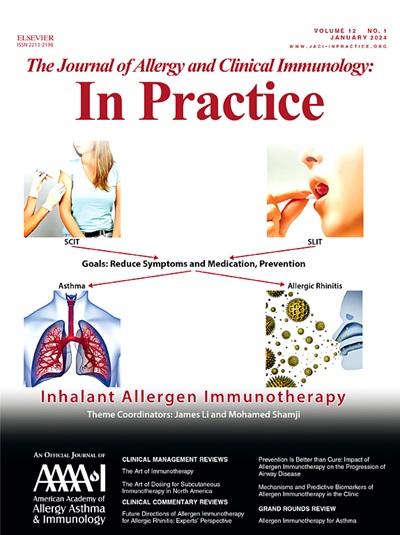变态反应免疫学临床颠覆性创新的重要性。
IF 6.6
1区 医学
Q1 ALLERGY
Journal of Allergy and Clinical Immunology-In Practice
Pub Date : 2025-09-01
DOI:10.1016/j.jaip.2025.05.057
引用次数: 0
摘要
过敏-免疫学领域一直处于医学创新的前沿,特别是那些具有颠覆性的创新。颠覆性创新(DI)代表了一种市场变化,它比之前的主流替代方案更成功地满足了消费者需求的某些方面,但在应用上可能更有限。对于过敏症学家和免疫学家来说,认识到创新,特别是DI,更好地欣赏我们充满活力的专业的贡献,并批判性地评估不断变化的医疗保健服务领域,这一点很重要。这篇文章强调了过去、现在和未来的颠覆性创新——在过敏-免疫学领域和跨经济部门,同时讨论了在不断发展的世界中成功实践的策略。本文章由计算机程序翻译,如有差异,请以英文原文为准。
The Importance of Disruptive Innovation in the Allergy Immunology Clinic
The field of allergy-immunology has been at the forefront of medical innovation, particularly innovations that are disruptive. A disruptive innovation (DI) represents a market change that meets some aspect of a consumer demand more successfully than a prior mainstream alternative but may be more limited in application. It is important for allergists-immunologists to recognize innovation, and DI in particular, both to better appreciate the contributions of our dynamic specialty and to critically evaluate the ever-changing landscape of health care delivery. This article highlights DIs—past, present, and future—within allergy-immunology and across sectors of the economy while discussing strategies for successful practice in an evolving world.
求助全文
通过发布文献求助,成功后即可免费获取论文全文。
去求助
来源期刊

Journal of Allergy and Clinical Immunology-In Practice
ALLERGYIMMUNOLOGY-IMMUNOLOGY
CiteScore
11.10
自引率
9.60%
发文量
683
审稿时长
50 days
期刊介绍:
JACI: In Practice is an official publication of the American Academy of Allergy, Asthma & Immunology (AAAAI). It is a companion title to The Journal of Allergy and Clinical Immunology, and it aims to provide timely clinical papers, case reports, and management recommendations to clinical allergists and other physicians dealing with allergic and immunologic diseases in their practice. The mission of JACI: In Practice is to offer valid and impactful information that supports evidence-based clinical decisions in the diagnosis and management of asthma, allergies, immunologic conditions, and related diseases.
This journal publishes articles on various conditions treated by allergist-immunologists, including food allergy, respiratory disorders (such as asthma, rhinitis, nasal polyps, sinusitis, cough, ABPA, and hypersensitivity pneumonitis), drug allergy, insect sting allergy, anaphylaxis, dermatologic disorders (such as atopic dermatitis, contact dermatitis, urticaria, angioedema, and HAE), immunodeficiency, autoinflammatory syndromes, eosinophilic disorders, and mast cell disorders.
The focus of the journal is on providing cutting-edge clinical information that practitioners can use in their everyday practice or to acquire new knowledge and skills for the benefit of their patients. However, mechanistic or translational studies without immediate or near future clinical relevance, as well as animal studies, are not within the scope of the journal.
 求助内容:
求助内容: 应助结果提醒方式:
应助结果提醒方式:


